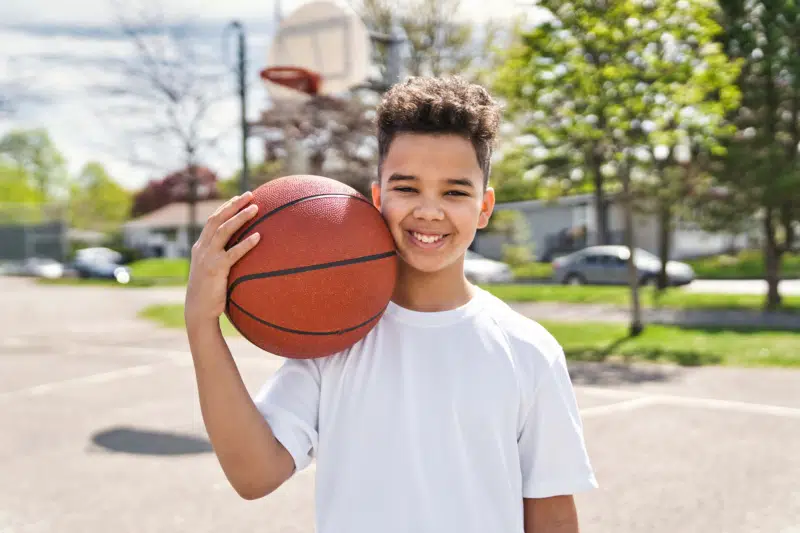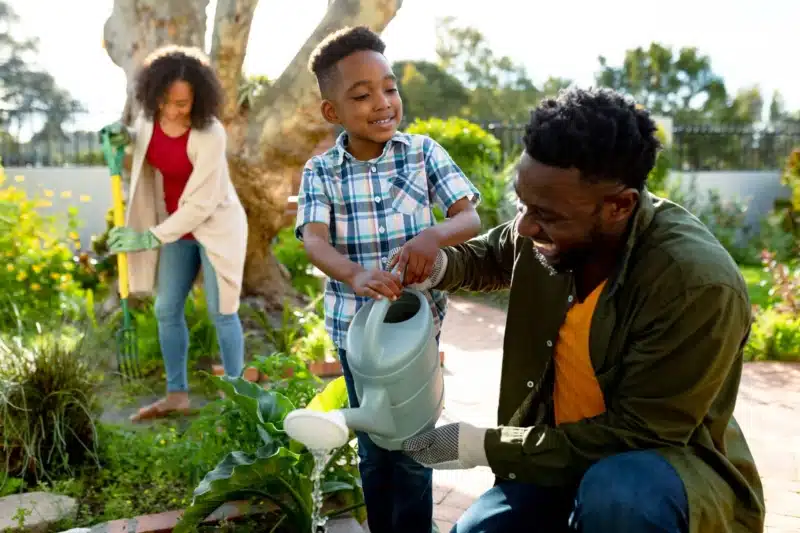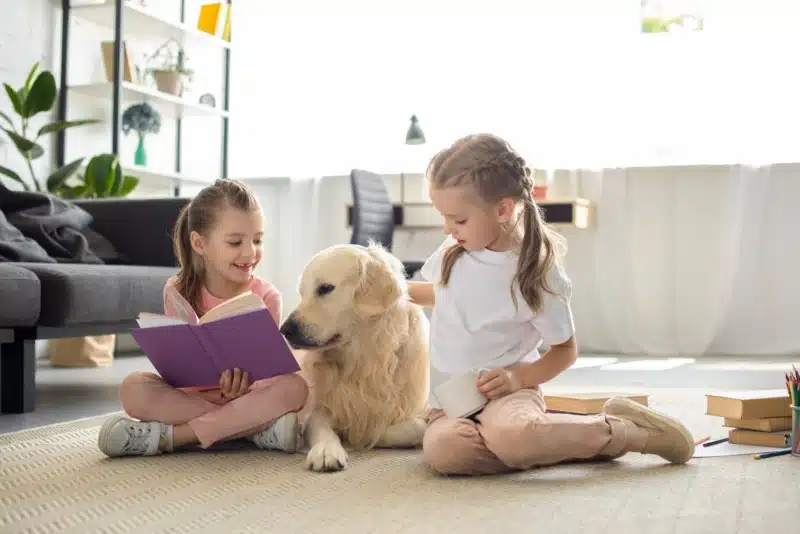About 6 million kids suffer from asthma in the Unites States.
*According to the CDC.
Condition content was medically reviewed by an AllerVie Health physician in Oct. 2022.
Facts About
Childhood Asthma

According to the Asthma and Allergy Foundation of America:
- More boys than girls have asthma when they are young. Teen girls are more likely to have it than boys.
- Asthma is one of the most common long-term illnesses that kids get.
- Many kids miss school because of asthma, but school absence can be avoided with the correct treatment.
- Two or more kids in a classroom of 30 kids are likely to have asthma. (The rate is higher in some states or cities.)
- In 2016, half of the kids with asthma had at least one flare.
- From 2001 to 2016, the number of flares in children of all races and ethnicities has gone down.
- In 2016, about half of the children with asthma had a flare.
- In 2016, asthma attacks were most common in children younger than 5 years old.
- Children ages 0 to 4 and non-Hispanic black children had the most asthma attacks that sent them to the ER or an urgent care center.
Childhood Asthma Symptoms
When a child has asthma, his or her symptoms are a lot like those of a cold or other illness or infection of the lungs. This makes it hard to tell if a child has asthma. Children with asthma may only have one symptom, like a cough that won’t go away, or they may have more than one.
The most common sign of asthma is a cough, especially one that seems to be chronic and may be triggered during exercise or while laughing or crying. Coughing at night or early in the morning is a characteristic of an asthma cough. A child may also experience breathing problems or wheezing – which can sound like a high-pitched whistling sound especially when exhaling. However the mildest half of children with asthma never wheeze. The absence of wheezing does not exclude the possibility of asthma.
For a correct diagnosis, it’s important to know when the symptom happens and what seems to make it happen. It’s also important to keep track of whether the symptoms happen during a certain time of year, at a certain time of day, or after doing a certain thing.
Asthma flares in children come on slowly but are usually noticed suddenly, and its symptoms can include:
- Shortness of breath, especially playing or exercising
- Breathing problems or wheezing
- Rapid breathing
- Cough
- Trouble sleeping
- Chest tightness
What Causes Asthma in Children?
Asthma is a genetic illness. The same genes that cause allergies also can cause asthma. Allergies can trigger childhood asthma. Common asthma triggers include cold air, pollution or exercise as well as exposure to airborne irritants like tobacco smoke, smog and even perfumes.
Exercise-Induced Asthma in Children
- If a child’s asthma is under control, it doesn’t stop them from being active.
- Exercise often brings on asthma that can’t be controlled. Most of the asthmatic kids who have trouble exercising aren’t taking the right medicines.
- Even in athletes with well-controlled asthma, asthma that gets worse because of exercise is rare.
- If a child’s asthma isn’t well controlled and they aren’t taking the right medicines, exercise can make their asthma symptoms worse.
Complications
The best evidence shows that asthma does damage to the lungs every day, not just on days when symptoms are bad. Lung damage may be more likely in people with asthma who can’t keep it under control, but this may not depend on what asthma patients do.
If your child’s asthma isn’t under control, it can cause issues that can hurt his or her life in other ways like:
- Frequent absences from school and activities
- Frequent trips to the emergency room
- Growth delays
- Stress, anxiety and depression
When TO Take YOUR Child to the Doctor
Sometimes it’s hard to tell if someone has asthma because it can look like other lung conditions. Because of this, asthma is not diagnosed enough and isn’t treated enough. Sometimes the only sign is a persistent cough at night or wheezing and coughing after exercise.
You should consider taking your child to an allergy and asthma specialist to check for childhood asthma when you observe any of the following symptoms:
- Coughing, even if it is only related to an underlying cold or virus
- Wheezing
- Shortness of breath or rapid breathing
- Complaints of chest tightness
Our allergy specialists will diagnose your child, and if he or she has asthma, they will make a plan to ease the symptoms and protect your child’s lungs so that they can live a full and active life.
When TO go to the Emergency Room
Asthma flares can vary. Asthma flares almost always begin slowly but are too often noticed suddenly. Your rescue inhaler is the only medicine you should use for coughing. Anytime you are using your rescue inhaler more than once or twice a day, it is time to contact your asthma doctor to avoid trips to urgent care or the hospital.
Most trips to the emergency room can be avoided; however, if you see any of the following in your child, take them to the emergency room for treatment:
- Shortness of breath you can see as their stomach and chest move
- Severe coughing or wheezing
- Difficulty walking or talking

Childhood Asthma Diagnosis
To diagnose your child for asthma, allergy specialists will review your child’s medical history, perform a thorough physical exam and ask about family history with asthma and allergies. They may also conduct the following tests:
- Spirometry – uses a device to check lung function.
- Chest X-rays – can help rule out other conditions or lung issues.
- Allergy tests – allergy tests can help identify triggers for asthma.
Treatment FOR CHILDHOOD ASTHMA
Your allergy specialist will develop an asthma treatment plan tailored to your child’s age, health and severity of their asthma symptoms. Your child’s treatment plan will help your child live a full, active life without restrictions from asthma.
Almost all children should be a full participant in all of life’s activities without compromise due to asthma. Medications that may be recommended to treat your child’s asthma fall into two categories; quick-relief medications and long-term control medications.
Quick-Relief Medications
Long-Term Control Medications
Steroids for Childhood Asthma
Asthma Action Plan
Types of Asthma Medications for Children
There are basically four types of asthma medicines:
- Allergy Shots – This therapy is the original homeopathic therapy that has been around for over 100 years. It is the only treatment that has been shown to actually change your immune system and get to the root of the problem at the deepest level possible. They take months to begin working and are given in the doctor’s office.
- Biologics – These are typically injections given every 2-8 weeks for those with more severe asthma, some are approved for use in children.
- Rescue Inhalers – These are used to control symptoms as they occur and do nothing for the root of the problem. Albuterol is the most common example.
- Prevention Inhalers – These typically contain tiny amounts of steroids and get to the root of the problem. They take 2-3 months to begin working.
Is It Easy to Give Asthma Medicine to Children?
Most asthma medications are available in several forms including Nebulized medicine for children less than 4, traditional inhalers used with a spacer for children of all ages, and powder-based inhalers for children over 6 years. Talk with your child’s pediatrician or one of our allergists for the option that may work best for your child.
Risk Factors
Nasal Allergies
Family history of asthma
Exposure to tobacco smoke, smog, or other airborne irritants
Health issues such as being overweight
History of respiratory issues

Managing & Preventing Childhood Asthma
Follow your provider’s treatment plan to manage your child’s asthma. Allergy tests should be your primary starting point before you make any changes to your home environment:
- Help your child avoid secondhand smoke by not allowing smoke in your home or car.
- In children who are allergic to dust mites, studies suggest aggressive cleaning may cause allergies and asthma.
- Don’t allow pets in your child’s bedroom. If you are not allergic to the pet, it’s irrelevant.
- Don’t use scented cleaning products or candles.
- Help your child stay at a healthy weight.
- Make sure your child gets a flu shot every year.


